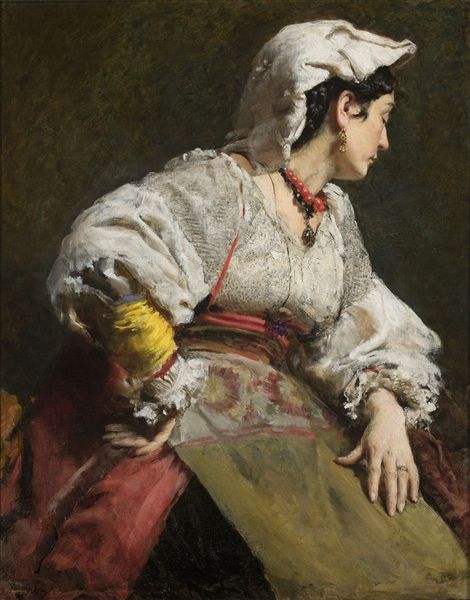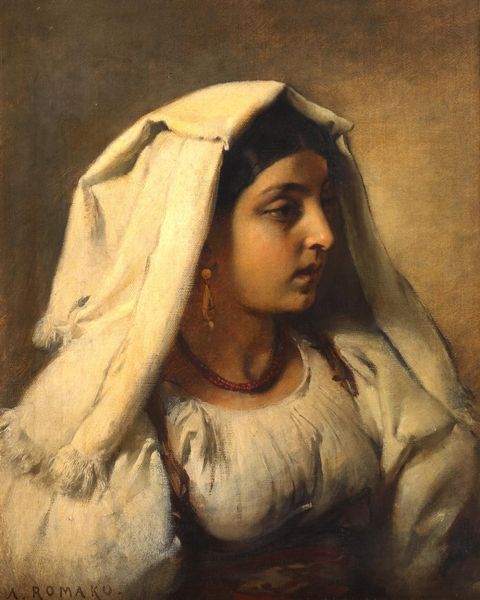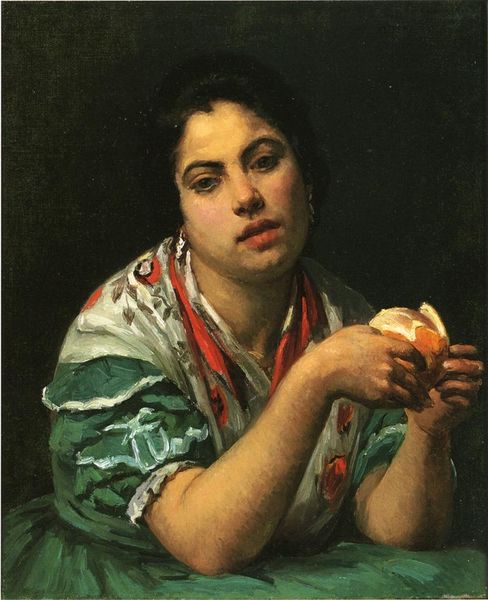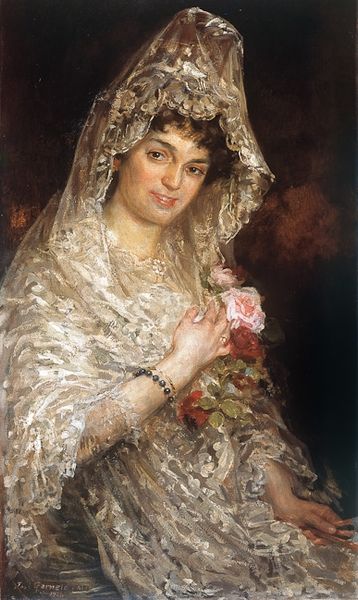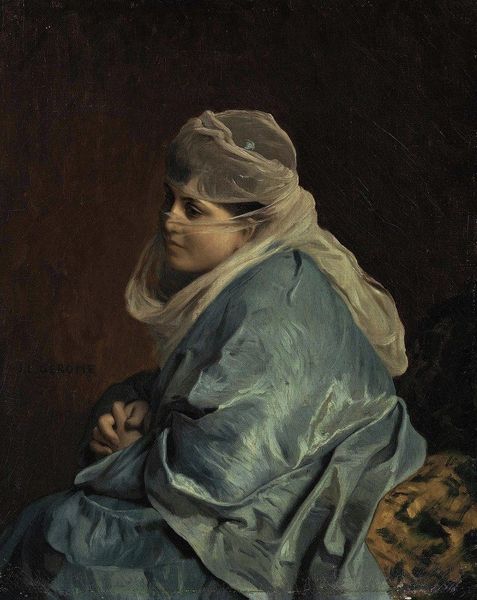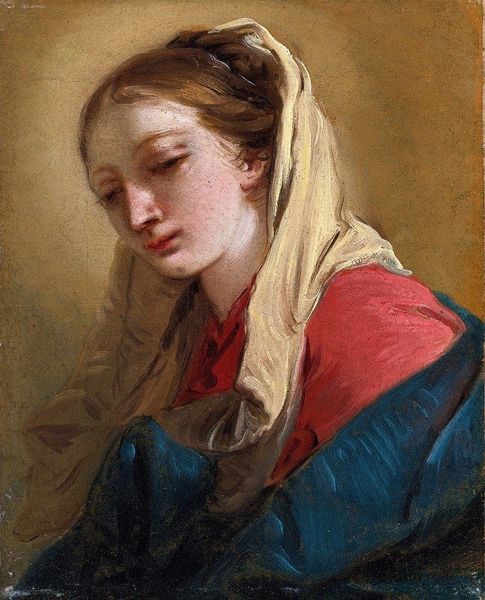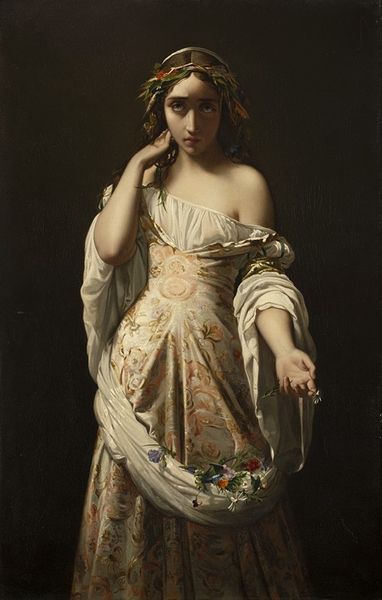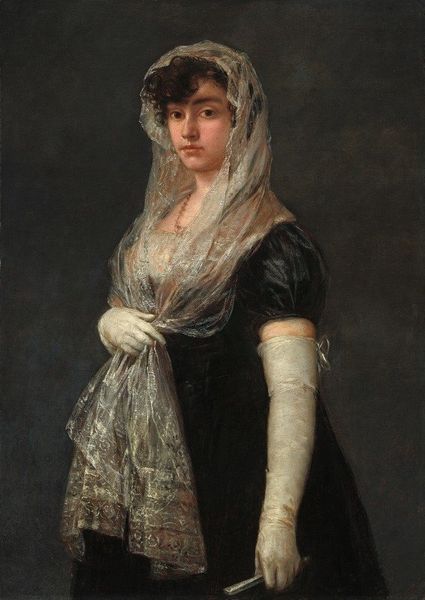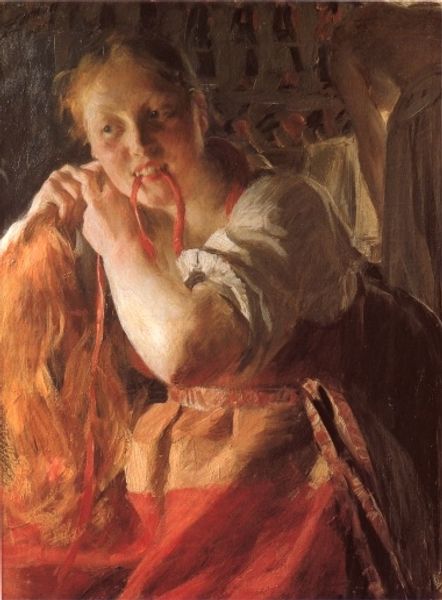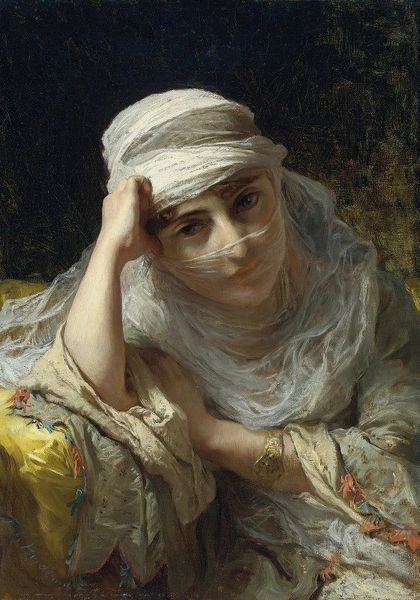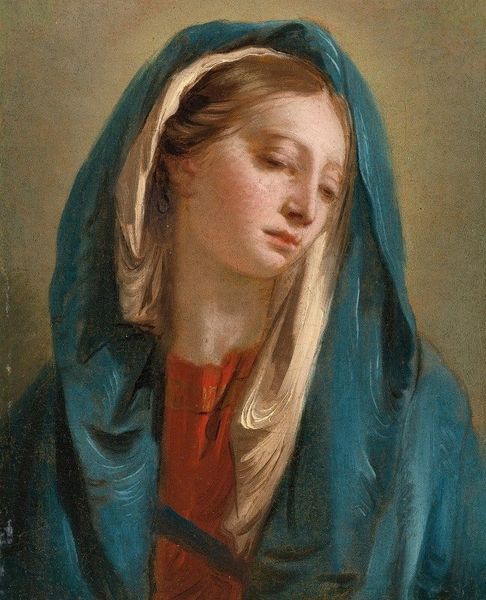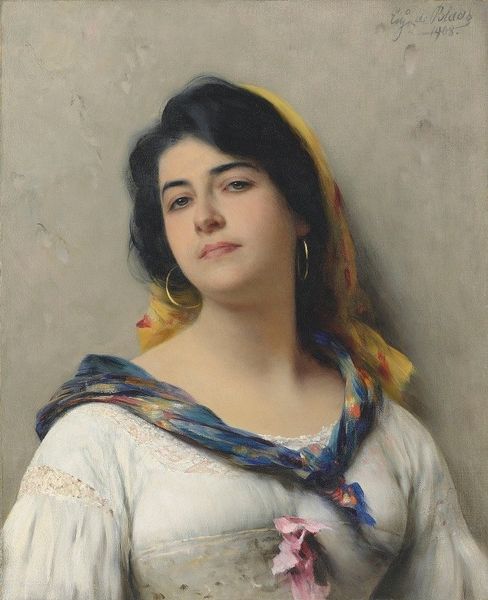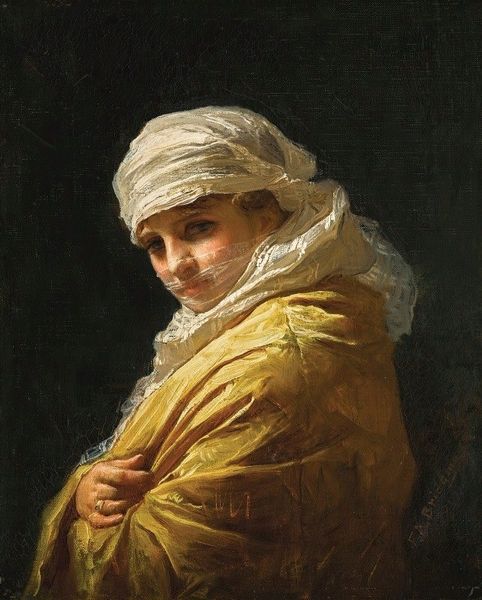
painting, plein-air, impasto
#
portrait
#
figurative
#
character portrait
#
painting
#
impressionism
#
plein-air
#
portrait subject
#
impasto
#
portrait reference
#
portrait head and shoulder
#
animal drawing portrait
#
portrait drawing
#
genre-painting
#
facial portrait
#
portrait art
#
fine art portrait
#
celebrity portrait
Copyright: Public Domain: Artvee
Editor: So, this is Mary Cassatt's "Spanish Dancer Wearing a Lace Mantilla" from 1873. It feels almost like a study in light and texture, particularly in the rendering of the lace. How should we approach reading this work? Curator: I'm immediately drawn to the materiality of the piece. The impasto brushstrokes, especially in the lace and the skin tones, signal the physical act of creation. Consider where Cassatt sourced her pigments. Was she grinding her own? Who was providing the canvas and the lace, and what kind of economic structure enabled their production and her access to them? These details situate the work within its time, providing context for what might otherwise be purely aesthetic considerations. Editor: That's a fascinating point! I was initially focused on the figure's expression, but thinking about the material processes shifts my perspective. What about the subject? Does she fit into your materialist interpretation? Curator: Absolutely. Who was this dancer? Was she a professional? What was the role of women as labourers, and consumers in the 19th Century, as Cassatt gained success painting upper class woman enjoying consumer culture? It prompts questions about how gender, class, and cultural exchange intertwine in the production and consumption of art. What do you make of her expression in relation to the materiality on display here? Editor: Now that you mention it, there's a kind of stillness to her expression that almost contrasts with the lively brushwork and rich texture. Maybe it speaks to a distance between the idealized representation of the Spanish dancer and the realities of her lived experience as an artist's model. Curator: Exactly! Seeing this as an exchange mediated by materials—paint, canvas, lace—offers a much richer understanding than focusing solely on aesthetics. It highlights the very real conditions that made this image possible. Editor: This makes me look at Impressionism in a whole new light. The focus on capturing fleeting moments obscures all of these intricate underlying economic systems. Curator: Indeed. It urges us to reconsider how we assign value in art history.
Comments
No comments
Be the first to comment and join the conversation on the ultimate creative platform.
